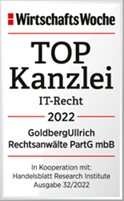At the suggestion of Federal Environment Minister Barbara Hendricks, the Federal Cabinet adopted new regulations on the take-back of waste electrical and electronic equipment on 11 March 2015. The aim of the new rules is to increase the collection volume of WEEE, to recover valuable metals from the WEEE and to ensure environmentally sound disposal of the residual materials. The Electrical and Electronic Equipment Act adopted today serves to implement the corresponding EU requirements.
The draft law provides for the following central innovations compared to the existing legal situation:
1. scope of application
- From 2018, an open scope covering all electrical and electronic equipment will be introduced. In the transition period until 2018, the category-based scope will be maintained
- Inclusion of photovoltaic modules and luminaires from private households in the scope of application from the entry into force of the new ElektroG
- Legally binding definition of the exclusions from the scope of application
2. registration
- Based on the existing obligation to register for every manufacturer who places an electrical or electronic equipment (EEE) on the market in Germany, the possibility is opened to appoint an authorised representative as well as to transfer the other obligations of the manufacturer to him.
3. self-marketing (opting) by the municipalities
- Extension of the opting-in period to two years (previously one year)
- Extension of the required notification period before taking up opting to six months (previously three months)
4. collection
- Collection target: Gradual increase in collection targets (2016: 45 per cent / 2019: 65 per cent - in each case of the average weight of appliances placed on the market in the last 3 years)
- Collection groups: Modification of the composition of the collection groups with a view to the requirements of recycling
- Rücknahme durch den Handel: Aufnahme einer Rücknahmepflicht für “Großvertreiber” (Verkaufsfläche > 400 Quadratmeter) sowohl beim Neukauf eines gleichartigen Neugeräts (sog. 1:1-Rücknahmepflicht), als auch für sehr kleine Altgeräte (Kantenlänge < 25 cm) ohne Neukauf eines gleichartigen Neugeräts (sog. 0:1-Rücknahmepflicht)
- Increasing the transparency of collection points: Inclusion of the obligation for all those who take back WEEE (manufacturers, distributors, municipalities) to notify their established collection points, as well as the obligation of the ear to publish a list of notified collection points.
5. treatment
- Increase recycling and recovery rates by 5 percent as of mid-2015
- Obligation to notify certified primary treatment facilities and publication of a corresponding list of all certified primary treatment facilities
6. inclusion of ordinance authorisations for the further specification of the requirements for the treatment and the preparation for reuse of waste equipment
7. increasing the transparency of the volume flows by specifying and expanding the volume reports for all collecting actors, both for WEEE from private households and for WEEE from users other than private households.
8. curb illegal exports of WEEE by adopting the WEEE regulations on the distinction between used equipment and old equipment (exporter must always prove functionality and direct reusability - reversal of burden of proof).
Source: Communication from the Federal Ministry for the Environment, Nature Conservation, Building and Nuclear Safety
Goldberg Attorneys at Law 2015
Attorney at Law Michael Ullrich, LL.M. (Information Law)
Specialist lawyer for information technology law
E-mail: info@goldberg.de


